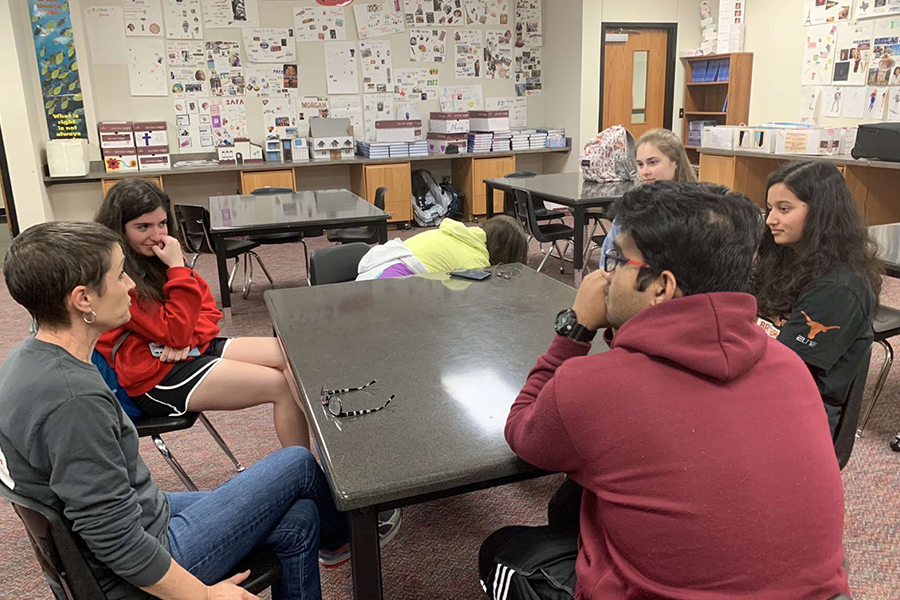Minutes to win it: statistics classes gather game data to learn about confidence intervals
In order to learn about confidence intervals, statistics classes have been working in teams of personal strengths to gather data from minute-to-win-it type games. “I love the idea of making the project interactive and allowing other students around the school to participate,” senior Anjali Pothukanuri said.
February 25, 2022
From cup stacking to spooning out cotton balls from a bowl on the top of your head, statistics students are playing games to help learn about confidence intervals
“The confidence interval project is for students to gather data over popular minutes to win it type games,” statistics teacher Kortney Smith said. “Using that data to create a confidence interval, or an estimate of what the true population mean, or proportion is for that activity. Statisticians create confidence intervals because it is impossible to get data for an entire population.”
Rather than randomly dividing the class into groups for the project, Smith has each student take the Color Personality Assessment.
“They were split into groups that ideally had one of each color,” Smith said. “Then they analyzed things they do to frustrate others, and what they are frustrated by for each color in their groups. From there, we create team norms and consequences that all groups are going to follow throughout the course of the project.”
The students found that the results of the assessment were accurate and understood the purpose of them taking the assessments.
“Putting people together with different strengths and weaknesses will benefit the group because something that one person may struggle with, another may find that easy, ” senior Anjali Pothukari said..“I also think that having more brains allows for less mistakes whether it’s math-related or even simple things like spelling, having more people always for better projects. ”
Pothukari and his group tried to get students to stack and unstack plastic cups into a pyramid in under 30 seconds.
“I love the idea of making the project interactive and allowing other students around the school to participate,” Pothukanuri said. “That way we can get more samples, and they are random because we did not track the students down.”
The end product will be a stop animation of the data, and according to Smith, it will provide a better understanding of confidence intervals and how to work better in a team.
“My hope is that by highlighting individual strengths, and empowering the teams to hold each other accountable, it will be a better working relationship,” Smith said. “I want them to focus on their creativity in presenting a math topic to a general audience. I hope it allows them to understand the calculations behind the intervals. More importantly, I hope they are more aware of how they overcame obstacles with their team to complete the project. ”






